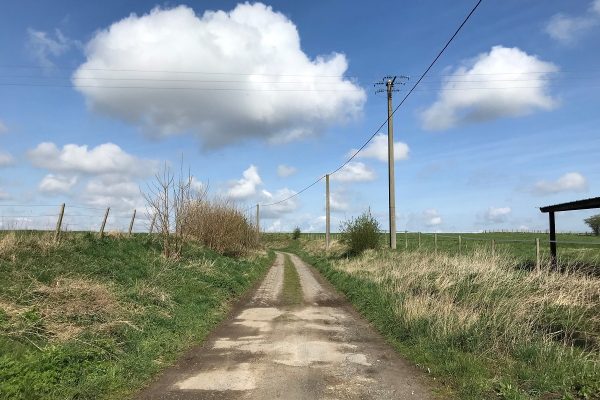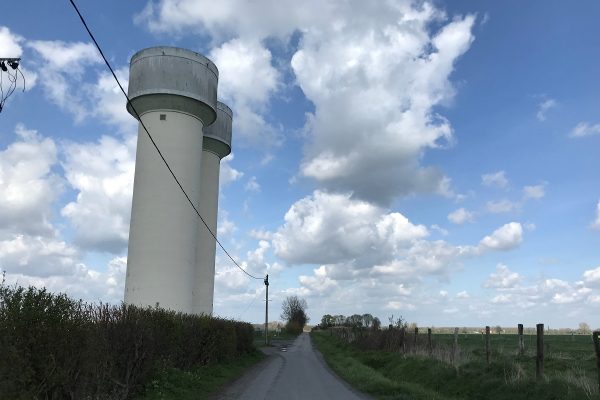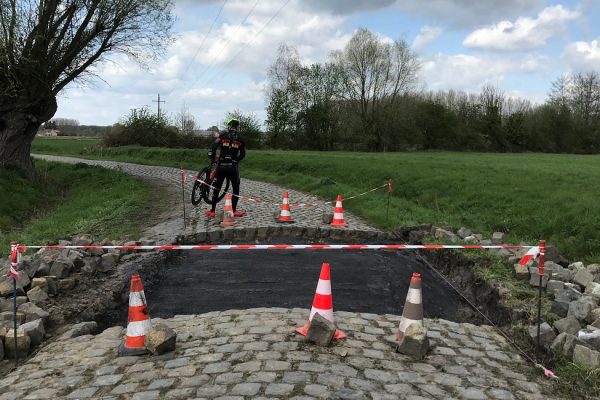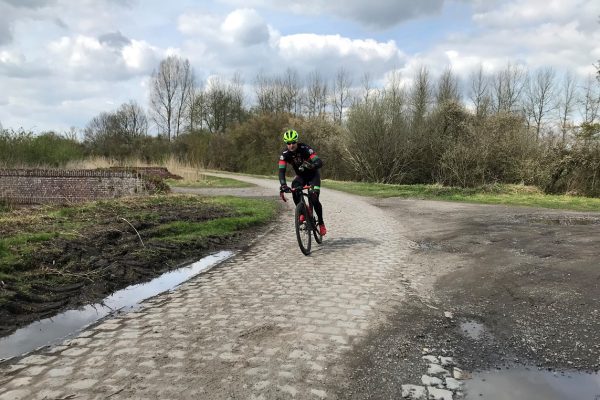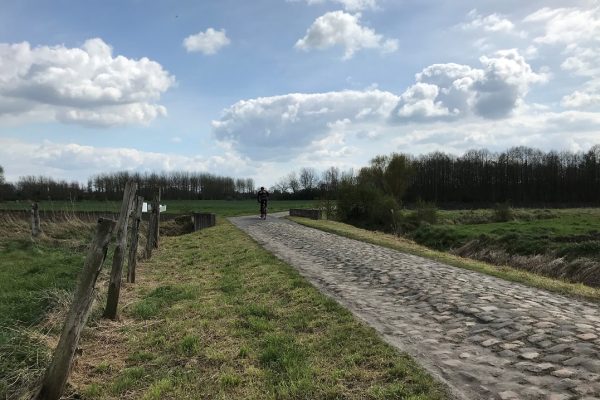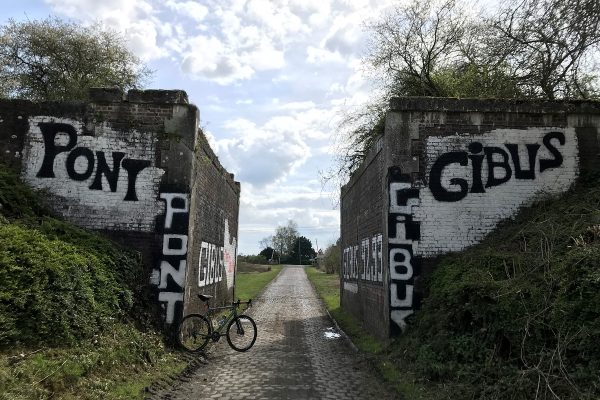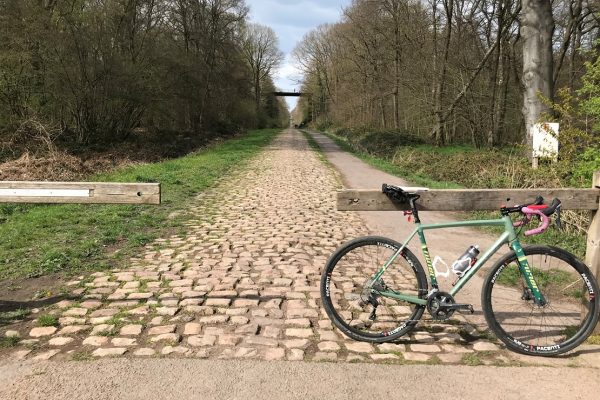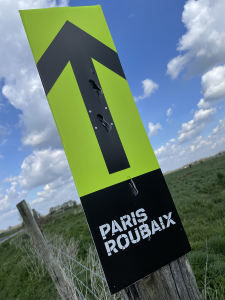It’s recce season! Assistant Lead Cyclist Gareth Jones has been over in France to check out stage 5 in detail: Lille to Arenberg, 155km and here’s his blog sharing everything he learned along the bumpy way.
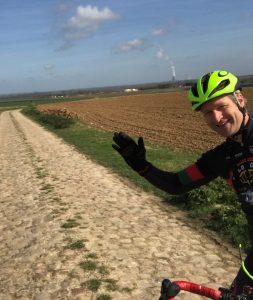
From a cycling point of view, the good news is that the cobbles themselves are nothing like as difficult as the Paris-Roubaix cobbles: we have only 19.4km versus more than 50km on Paris-Roubaix. On top of that, all of our 11 sectors are generally shorter (range from 1.3km to 2.8km), flatter and less degraded. Which isn’t to say that this isn’t going to be a challenge!!
However, for those of you hankering after a Paris-Roubaix-type experience, you’ll be reassured to know that we do cycle along a couple of the same sectors as Paris-Roubaix towards the end for glory stories – although not the infamous Arenberg Trench where the stage ends just before it reaches the cobbles and for which you’ll be eternally grateful (by all means, feel free to do them for bonus points)!
For all you virgin pavé riders, you’ll be wondering what on earth to expect on the ground. Hopefully you’ve already read our earlier blog tackling the ‘how to’ of cobbles. On stage 5 there’s actually quite a bit of variety in style of pavé, so the challenges are not always exactly the same. They vary from arrow straight to gently sweeping, from pan-flat to one notable hill, from short (1.3km) to long (2.8km) and from nicely spaced out (early on) to thick and fast (as you reach the end of the stage).
First, check out Gareth’s ‘How To Ride Cobbles’ video, then read on to learn about stage 5 in detail:
The first 5 sectors …
… are technically the most difficult because they’re more farmy (read ‘dirty’) and the mud and grass make cycling more slippery and difficult (especially if we’re unlucky with the weather) . But even in good weather, they’re dusty and uneven. This is tricky because you can’t always ride where you want to ride and that matters, because maintaining momentum and staying confident and relaxed is key.
The 2nd sector is probably the most challenging section. It first heads uphill but the inevitable downhill is especially tricky because of the bad quality of the cobbles, meaning that the only good line is along the middle of the road, so expect to see a single file of riders on this section.
On the plus side, in general these first sections are flat (sector 2 is the only exception), without tight corners (there are only 2 or 3 difficult corners where you have to brake, in all 11 sectors) and the condition improves as you go.
The next 6 sections …
… get easier! Which is lucky, because while they are better quality pavé, they are also more frequent and you’ll get more tired. So the net result is they’ll probably feel just as difficult as the early ones.
You’ll have seen in our ‘How to ride cobbles‘ blog that the recognised best technique is to ride hard, maintaining as much momentum as possible, while barely holding on (no white knuckles – just a nice loose hand grip – enough to keep you in contact with the handlebars). But given the amount of effort involved in a whole stage, it’s crucial that if you’re going to ride hard, you only ride hard on cobbles. Grabbing the chances to take the pace down and relax a bit between sections is going to be key. More good news – it’s really pretty flat between the cobbled sectors, so we’d encourage you to ride between them with as little effort as possible in groups, enjoying the banter and camaraderie before the rattling starts all over again.
Better quality these later sections might be, but as we’ve already said, they come more frequently and last longer than the earlier sections, so you get less time to recover in between and they’ll seem more difficult even though they’re less rough. Most often you’ll get 5-6km of recovery time, but the least amount you can expect is only 3km, making those opportunities to ease off the pressure between sections all the more important.
In conclusion:
This is a stage you’ll never forget. Approach it with good humour, a generous dose of commitment and tenacity and you’ll survive to ride another day. Plus, maximum bragging rights back home!
Gareth
